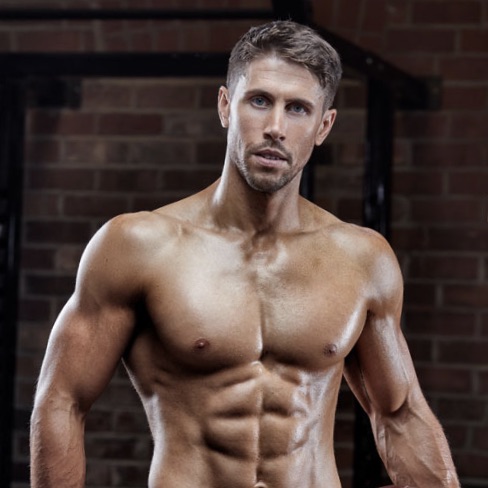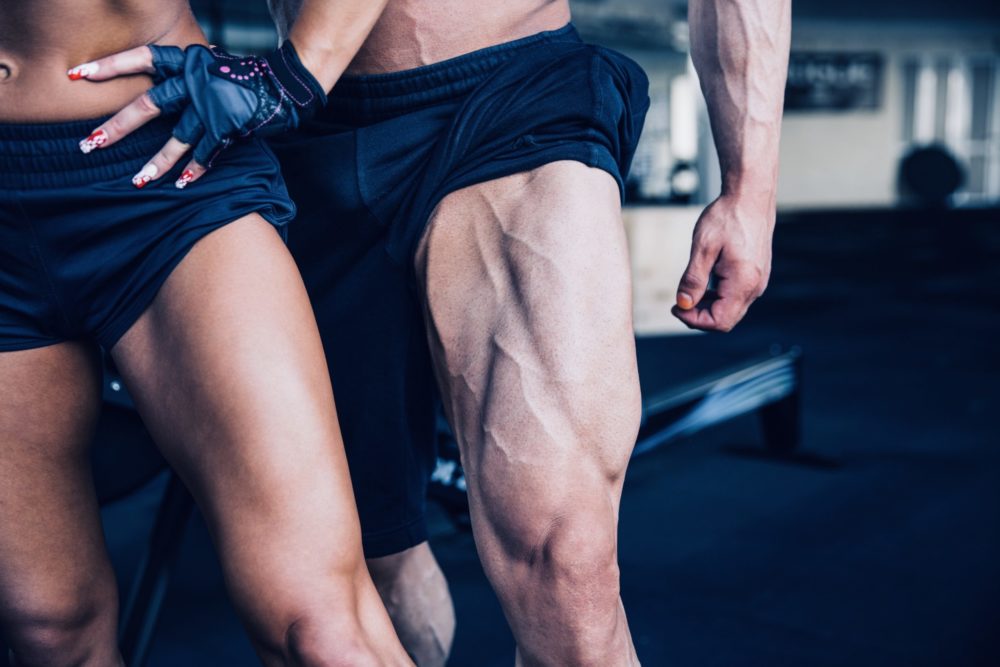Heavy strength bands are traditionally used by strength athletes as a form of accommodating resistance. They’re used to add an ascending resistance to a barbell, or take it away using the reverse bands technique.
It’s not often these heavy strength bands get used as a tool on their own. But, if you’re looking for an efficient way to train your squat when resources are limited then heavy band squats could be the answer.
More commonly found strength bands (light-medium resistances) can work to some degree, and there are smart ways to make the best of them. Some of which I included in a previous band exercises article HERE.
When it comes to loading your squats though, these lighter bands just won’t make the cut for more most. Here’s how to get the most from your squats using only heavy resistance bands.
Heavy strength bands
41 inch strength bands usually range from 35lbs (15kg) all the way up to 200lbs (90kg) when fully stretched. The more you stretch the more resistance you get from them.
Strength bands have got what’s called a “curvilinear resistance”. This means that while you might think the increase in resistance is linear (i.e., the more a band is stretched the more resistance it has), it’s actually more like a curve – There’s a sharp rise in resistance initially, but it quickly curves and levels off. That is, if you set them up correctly.
There are a few practical things you can take from this info. First, when using a heavy strength band the bottom portion of any exercise will be loaded far less than at the top. For example a band that’s 200lbs at the top could be less than half that at the bottom of the exercise – What some companies sell as a “monster” band, while hitting 200lbs (90kg) at the top, at the bottom you’ll only get 80lbs (36kg).
Because of this how you hold the band and position yourself REALLY matters. If you position the band optimally then the resistance will allow you to use near maximal band resistance through a good portion of the exercise. Not just right at the top of your squat. If your band is set to be fully slack at the bottom, then really you’re only doing a bodyweight squat here.

All the gear and no idea…
Using a band alone in a squat isn’t ideal, but it’s sometimes necessary. Because of the way a band loads, it has a bearing on your strength development through a full range of motion. This is especially true if you’re strong and want to maximise every inch of your squat. In this case heavy bands are ESSENTIAL. As would finding the best way to set them up.
Not only can the strength and setup of band squats impact your strength, but incorrectly setting up with a resistance band can impact muscle development. An overly light and slack band at the bottom of a squat would especially impact glute muscle activation – since your glutes are loaded most in this range. Positioning the band in a way that allows you to keep some tension at the bottom will better develop strength and muscle mass.
Setting up your bands in a way that creates more tension will further target your quadriceps and hamstrings towards the top of the squat, where you’re strongest. A heavy band will also accelerate you down faster creating a form of eccentric overload. This would benefit your strength and athleticism even more. Here in my opinion are the most effective ways to perform your heavy band squats.
“Suspender” band squats
Using the suspenders technique with band squats allows the band to be stretched further. The band is over your shoulders and your hands are placed on the band in front for support – like you’re wearing a pair of pants suspenders (I think the fact I’m wearing a grandad henley shirt adds to the effect!!).
Also, notice how the band is looped around my feet on the floor and pulled from INSIDE your knees. The more common way is to stand inside the band for it to go on the OUTSIDE of your knees.
In my opinion this is an ineffective way to do them. Instead, in the way I’ve shown you’re able to achieve more band tension, it’s more comfortable having the band inside of your knees, and the band positioning on your feet even acts as a cue to “spread the floor” when you’re squatting.
Zercher band squats
When using the zercher technique the band can’t be stretched quite as far as the suspenders technique above. But then again you probably wouldn’t want it to. Zercher band squats are a big challenge for your whole body, and a really useful variation for low back strength and health. In times where you’re sitting a little more and walking a little less this is important.
Unlike a typical zercher squat where a bar might be resting in the crook of your elbow, with a band it’s more comfortable to have it on your forearm. If you want to challenge your upper body more you can even place it closer towards your wrists.
Zerchers with will challenge your traps, shoulders and biceps, as well as your entire lower body. As a full body exercise heavy banded zercher squats will thoroughly kick your ass.
Goblet band squats
Band squats using the goblet position offer a number of advantages, especially for more volume-based training. If you’re a little sadistic then the biggest one of them all would be the ease in which you can perform drop-sets.
For example as a drop-set you can start with one or even multiple bands and release as you go along. You’d end with just your own bodyweight to finish. The band is comfortable to hold and its position in front helps with your overall ability to deep squat.
As you’ll notice the same band position around the feet is used with this and all other techniques shown. The advantages we’ve already spoken about. For reference though it’s useful to show the alternative band set up. Here I demonstrate how to perform a front squat with a band outside of your knees.
Front band squats
Band squats in the front rack position can be another useful variation, although they tend to work better with the band coming outside of the knees due to how the arms are held.
The front squat or California front squat position with a bar would typically result in a more upright torso. There’s more quadriceps muscle activation and less hamstrings. Interestingly, based on a number of studies glute activation seems to be about the same in front versus back squats, but I digress.
There are significant differences in muscle activation with a bar on your back versus front. While this is true I speculate there aren’t many with a band. If you find the front rack position to be most comfortable then by all means use it. Otherwise to hit your legs the goblet and suspenders technique are likely better.
Take home
A heavy strength band is an efficient way to load a squat when resources are limited. You should never settle for inferior setups or overly light bands when there are better options.
The suspenders technique is more difficult to get in position for, but once set you’ll likely find it most comfortable. The goblet squat technique is easiest to get in and out of and makes for a useful method to employ in high volume workouts. if you’re feeling sadistic then simply throw in a few drop-sets using the goblet band technique. The zercher squat is a whole other animal. For a full body workout, or if you’re involved in grappling sports then zerchers are a toolbox essential.
Need band recommendations?
In the UK I recommend Pullum or Wolverson bands. For the US and Canada I’ve used Elite-FTS bands. For more information about Online Strength and Physique Coaching click HERE.

I build Olympians, Cover Models and those who want to look like them. Author or “Ultimate Abs” available in all good book stores.

where can I find those those bands?
links are at the bottom of the article. Gareth
Would you recommend more reps/volume to compensate for not having a barbell loaded with weight?
Hey Neal. No I wouldn’t. In an ideal world I’d choose the heaviest band I could find and/or focus on longer duration repetitions (e.g., slower eccentrics, adding pauses in certain positions etc.). Band also offer some unique benefits over barbell training. If you’re interested then this is a good read: http://thefitnessmaverick.com/resistance-band-training-101/
Just wondering how exactly you get into the suspenders position for back squats. Do you position the band over your feet first then wrestle the loaded band over your head. Or do you place the band around your neck then try to get it over your feet.
Dan
Simply place over your feet then get in to a deep ATG squat to get it over your head. Then the fun begins.